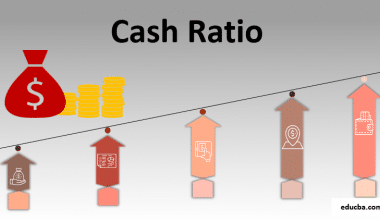Many new parents must make do with a combination of vacation time, sick days, and short-term disability, despite the fact that several states have approved legislation guaranteeing paid maternity leave for employees at larger businesses. Read on to learn how paid maternity leave works by state and the countries – apart from the United States – that provides one.
What Is Paid Maternity Leave?
Paid maternity leave (or paternity leave) is the paid time off that some employers offer to employees who are expecting a child or have adopted a kid. Employees sometimes only receive a portion of their full-time income, usually between 60% and 80%, with restrictions based on the statewide median wage.
Businesses are not obligated by law to offer paid maternity leave to employees in the United States. Only 23% of civilian workers had access to paid family leave in 2021, per the Bureau of Labor Statistics. The United States is the only developed country in the world with a paid maternity leave requirement.
Thankfully, legislation providing paid maternity leave has been passed by 11 states and the District of Columbia, though some of these laws won’t take effect until 2023 or later. All federal employees are entitled to 12 weeks of paid family leave.
How Long Is Maternity Leave?
Employers who voluntarily give paid maternity leave typically offer 8 weeks. Even employees with paid leave frequently extend their leave with vacation time and sick days because many parents find this inadequate—experts advise 3 to 6 months.
The standard length of paid maternity leave worldwide is 29 weeks.
Advantages of Paid Leave for Families
According to research, both parents and kids can benefit greatly from paid family leave. In certain ways, especially for lower-income households, the additional money benefits families in the long run.
Another benefit of family time is that it improves both parents’ and kids’ health. Women can take up to eight weeks to completely recuperate from giving birth. The additional bonding time, consistent nursing, and decreased exposure to infectious diseases all improve a child’s health.
Paid family leave may also cover further medical issues, such as:
- Foster or adoption care
- Providing for the needs of a partner, kid, or parent who has a serious health condition
State Maternity Leave Regulations
As mentioned above, 11 states—California, Colorado, Connecticut, Delaware, Maryland, Massachusetts, New Jersey, New York, Oregon, Rhode Island, and Washington—as well as the District of Columbia—have approved laws requiring paid maternity leave. State-to-state differences exist in benefits and eligibility.
Paid Maternity Leave By State
The United States, which is lowest among the 36 members of the Organization for Economic Co-operation and Development, has a poor track record when it comes to how it treats new parents.
In the United States, mothers of newborn or recently adopted children are only required to take twelve weeks of unpaid leave, and only if they work for a company with fifty or more employees. There is no legal requirement for maternity leave, either paid or unpaid, for United States employees in businesses with fewer than 50 employees. Due to this concept, just 12 percent of Americans receive paid parental leave, with the percentage falling as low as 5 percent for low-income families and families of color.
Nevertheless, the Family and Medical Leave Act exists in the United States (FMLA). This gives some workers—including those caring for a newborn or who are pregnant—the choice to take up to 12 weeks of unpaid, job-protected leave.
The main problem with the FMLA is that only specific organizations, such as those with 50 or more employees in 20 or more workweeks in the current or previous calendar year, are covered by it.
There are now nine states that pay for family and medical leave: California, Colorado, Connecticut, Massachusetts, New Jersey, New York, Oregon, Rhode Island, and Washington.
Which Country Has The Longest Maternity Leave?
While many other nations have adopted the opposite stance, the United States is far behind in terms of maternity leave. The countries having the longest maternity leaves are shown below:
- Bulgaria: 58.6 weeks
- Greece: 43 weeks
- United Kingdom: 39 weeks
- Slovakia: 30 weeks
- Croatia: 30 weeks
- Czech Republic: 28 weeks
The crucial term is “paid,” even though the duration of paid maternity leave as a whole is significant. These countries do not all offer fully paid maternity leave. The paid maternity leave percentages for the countries mentioned above are as follows:
- Croatia: 100%
- Bulgaria: 90%
- Slovakia: 75%
- Czech Republic: 61%
- Greece: 49%
- United Kingdom: 30%
When both lists are taken into account, Bulgaria emerges as the global top in maternity leave. Employees receive 90 percent of their income in addition to 58.60 weeks of paid vacation.
Which Countries Lack Paid Maternity Leave?
Only seven other countries in the world, save the United States, do not provide women with any paid maternity leave. They consist of:
- Papua New Guinea
- Suriname
- Micronesia
- The Marshall Islands
- Nauru
- Palau
- Tonga
Which Country Has The Best Maternity Leave Policies?
The top five countries for maternity leave are Bulgaria, Greece, the UK, Croatia, and Chile.
States That Provide Paid Maternity Leave
Despite the overwhelming evidence that paid maternity leave is advantageous for everyone concerned, state policies differ substantially. Several states don’t offer any safeguards beyond The Family and Medical Leave Act (FLMA), which only provides rights and benefits to federal, state, and private sector employees who worked 1,250 hours in the previous year and were employed by organizations with 50 or more people.
Only eight states—California, Connecticut, Massachusetts, New Jersey, New York, Rhode Island, Washington, and Oregon—offer publicly financed paid maternity leave.
Beyond FLMA, many additional states have some form of job protection. Below, you can read more about how the paid maternity leave varies by state.
California
The New Parent Leave Act, California’s new paid parental leave law, became effective in 2019. New parents who work for an organization with at least 20 employees are permitted to take up to 12 weeks of leave under this regulation. They do not offer job protection, but they will give coverage for any employee, full- or part-time.
Connecticut
The Connecticut Family and Medical Leave Act would allow Connecticut employees to request and take paid family leave (CTFMLA). By virtue of this legislation, all expectant and adoptive workers are entitled to 12 weeks of paid leave each calendar year, plus an additional 2 weeks for conditions that render them incapable of working while pregnant. In 2022, this Act became operative.
Workers must have worked a minimum of 1000 hours over a period of at least 12 months. The 12-week period of support is included.
Massachusetts
With the Massachusetts Paid Family and Medical Leave Act, Massachusetts also provided paid family leave in 2019. (MA PFML). Similar to California, the MAPMFL offers employees who work for firms that contribute to the unemployment insurance fund up to 12 weeks of paid leave. This implies that you will be eligible for this paid family leave even if you travel to Massachusetts from where you work.
New Jersey
The New Jersey Family Leave Act allows new parents to take up to 12 weeks of partially paid parental leave in New Jersey. Whole employment protection is offered for 24 weeks.
Oregon
Oregon is the most recent state to mandate paid maternity leave. The legislation is the first of its type and was passed into law in August 2019. Contrary to other states, Oregon will fully restore all lost wages for all employees, even those who could be living in the country illegally, as long as they make at least $1,000 annually.
Rhode Island
Employees in Rhode Island are entitled to up to 13 weeks of leave for a serious health condition, including pregnancy, every two calendar years under the state’s Parental and Family Medical Leave Act.
New York
On January 1st, 2018, paid family leave became obligatory in New York. Employees are currently granted up to 8 weeks of paid family leave; by 2021, that number will increase to 12 weeks. Family leave is being implemented gradually.
Washington
Employees in Washington will be able to apply for paid family and medical leave benefits starting in January 2020. Up to 12 weeks of paid leave per year are possible with the help of these perks.
Unpaid Maternity Leave in Some States
While some states don’t have any provisions for pregnant workers, others at least provide workplace protection.
Iowa
In Iowa, businesses with four or more employees are required to provide unpaid leave.
Kentucky
Employees in Kentucky are entitled to 6 weeks of unpaid leave if they give birth to a child or adopt a child.
Louisiana
Due to regulations put in place by Louisiana, employees of businesses with 25 or more employees are entitled to 6 weeks of unpaid leave, as well as 4+ months for disability related to pregnancy.
Maine
Companies with 15 or more employees must provide 10 weeks of unpaid leave within a two-year period under Maine law.
Maryland
Companies with 15 to 49 employees must provide 10 weeks of unpaid parental leave in Maryland.
Minnesota
Companies with at least 21 employees are required to offer 12 weeks of unpaid leave to Minnesota citizens within 12 months of a birth or adoption. Before requesting leave, eligible employees had to have been employed by the organization for at least a year on a part-time basis.
Montana
Women who work for public employers in Montana are entitled to a “reasonable leave of absence for pregnancy” of up to six weeks. There are additional options for up to 15 days of paternity and adoption leave.
New Hampshire
Companies with six or more employees must offer unpaid leave in New Hampshire, and there is no time limit on the duration of this absence. Additionally, the law states that if a corporation offers leave for other ailments, it must also offer it for pregnancy.
North Dakota
The only individuals qualified for North Dakota’s leave protections are state employees. Within a year, they are permitted up to 12 weeks of unpaid leave. A similar rule is in force in South Dakota and it only applies to state personnel.
Tennesse
Four months of unpaid leave for employees must be made available to Tennessee residents. The decision to grant paid leave is up to the business.
Vermont
Employees at businesses with ten or more employees in Vermont are entitled to 12 weeks of unpaid leave throughout the course of a year.
North Carolina
Companies in West Virginia with 12 or more employees are required to offer time off to pregnant workers who have worked there for more than 12 weeks, among other benefits.
Wisconsin
Companies with 50+ employees must offer six weeks for a birth or adoption. When taking care of a family member, two additional weeks may be added.
Wyoming
In Wyoming, it is up to the employer whether to offer paid or unpaid leave.
Washington, D.C.
For those who give birth or adopt a child, up to eight weeks of unpaid leave are available.
Virgin Islands
When medically essential, employees of private enterprises are eligible for up to 12 weeks of unpaid leave. Maternity leave typically lasts 8 weeks, with 4 weeks prior to childbirth and 4 weeks following.
How To Get Paid On Maternity Leave
#1. Emergency Loan
To obtain some cash in case of emergency during your unpaid vacation from work, apply for a maternity leave loan. Many parents who have decent credit or who can prove their employment and income are eligible for this kind of financial assistance.
With no financial worries, you can spend more time bonding with your child.
Prepare carefully for the payback phase. After the initial disbursement, the first monthly amount will be payable about six weeks later. Put aside money from your budget to cover this expense, and before taking out a loan, make sure your employer will keep the position open.
#2. Government Assistance
Programs that assist you to be paid while on maternity leave are required by several state governments. Yet, because each state chooses what to give parents, the amount of financial support varies greatly by location.
During three typical maternity leave situations, a portion of income is replaced by temporary incapacity paid by the state. Your unpaid time off may be greatly extended in two of these circumstances.
If your state has the program and one or more of these qualifying occurrences prohibits you from carrying out your job obligations, you may submit a claim for benefits.
- Incapacity due to pregnancy before the due date
- Recuperation following childbirth
- Perinatal illnesses and mental disorders
Note that only seven states—California, Hawaii, Massachusetts, New Jersey, New York, Rhode Island, and Washington—have a temporary disability program. If you work in one of the remaining 43, you are out of luck.
#3. Paid Leave for Families
A percentage of lost pay during an unpaid absence from work is replaced by state government-sponsored paid family leave programs. If you work in one of the regions that provide the support and experience one of these qualifying events, submit a claim for this type of financial assistance.
- Forming a relationship with an adopted kid or infant
- Adoption of a foster child into a family
- Husband tending to wife’s difficulties throughout pregnancy
- Taking care of an infant at home who is premature or ill
Yet, just six states—California, Massachusetts, New Jersey, New York, Rhode Island, and Washington—offer paid family leave to employees in the private sector. If you work in one of the other forty-four, you are out of luck.
#4. Unemployment Insurance
After your prolonged maternity leave is over, state-government unemployment insurance may offer a partial income replacement. In a few specific situations, you may submit a claim for support benefits.
This financial source is not permitted under universal laws while the FMLA is in effect, whether the mom is caring for her newborn or recovering from childbirth.
Also, each state has guidelines for unemployment benefits considering “good cause” reasons to quit or lose your work due to prolonged time off.
There are six states where an employee’s disability qualifies. You become eligible more regularly if you are taking care of a sick relative
#5. Grant Funds
Grants from the federal government are not available to people, which makes it difficult to get paid while taking maternity leave. Instead, universities, state organizations, and nonprofit organizations receive grants from the federal government to help the economy and promote social objectives.
Nonetheless, a small number of private organizations self-finance grants for new parents. If you meet the stringent requirements set forth by these organizations, it can lower the cost of your unpaid leave.
The Black Birth Equity Fund, which expands access to doulas as vital supports, is supported by the Dove Care grant.
The Mom Economy offers female small company entrepreneurs with less than ten employees incentives ranging from $1,000 to $3,000.
In Conclusion,
The FMLA mandates that companies with 50 or more workers provide up to 12 weeks of unpaid maternity leave. Investigate the advantages to which you are entitled in accordance with federal laws and corporate policy. It’s possible that your maternity leave will be pieced together from unpaid time off, sick days, short-term disability, and vacation time.
Related Articles
- WHAT IS MATERNITY LEAVE: What Is It & Difference in States
- MASS INCOME TAX: Definition and Rates
- EMPLOYEE BENEFITS FOR SMALL BUSINESSES: Best Easy Guide
- DISABILITY LEAVE: How It Works In California






